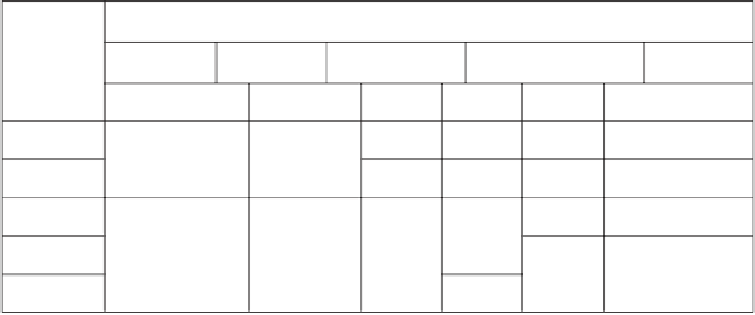Geoscience Reference
In-Depth Information
•
Note the above is based on Meyerhof (1956), which is approximately comparable
to the charts in Terzaghi and Peck (1967). Meyerhof (1965) later suggests values
∼
50% higher, due to the conservatism found.
Table 21.7
Allowable bearing capacity of granular soils (adapted from Meyerhof, 1956).
Allowable bearing capacity (kPa)
Foundation
width
B (m)
Very loose
Loose
Medium dense
Dense
Very dense
N
5
N
10
N
20
N
30
N
40
N
50
1
225
350
475
600
50
100
2
200
300
425
525
3
375
475
275
4
25
75
175
350
450
5
250
21.8 Settlements in granular soils
•
Settlements may be estimated from the SPT N- value in granular soils.
•
The settlement estimate is based on the size and type of foundation.
Table 21.8
Settlements in granular soils (Meyerhof, 1965).
Footing size
Relationship for settlement
B
1.25 m
1.9 q/N
<
B
1.25 m
2.84 q/N [B/(B
0.33]
2
>
+
Large Rafts
2.84 q/N
•
N
=
average over a depth
=
width of footing (B).
•
q
=
applied foundation pressure.
21.9 Factors of safety for shallow foundations
•
Factor of Safety (FS) accounts for uncertainties in loading, ground conditions,
extent of site investigation (SI) and consequences of failure. This is the traditional
“working stress'' design.
•
=
FS
Available Property/Required Property. A nominal
(expected, mean or
median) value is used.
•
Allowable Bearing Capacity
=
q
ult
/FS.
•
The industry trend is to use FS
=
3.0 irrespective of the above conditions.
•
For temporary structures, the FS can be reduced by 75% with a minimum value
of 2.0.



Search WWH ::

Custom Search